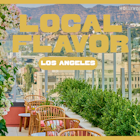
Oct 31, 2024 • 14 min read
There are lots of things to see and do in Aspen, Colorado. Read on for the best ways to spend your time during a trip to Aspen.

Oct 31, 2024 • 14 min read
There are lots of things to see and do in Aspen, Colorado. Read on for the best ways to spend your time during a trip to Aspen.

Oct 31, 2024 • 9 min read
Recover from the festive frenzy and gear up for a new year by taking a Twixmas break at one of these seven incredible locations.

Oct 31, 2024 • 7 min read
Named after the caldera at its core, Crater Lake National Park is one of the oldest protected areas in the US. Here's everything you need to know.

Oct 31, 2024 • 9 min read
Grindelwald is one of Switzerland's most beautiful towns.

Oct 31, 2024 • 6 min read
Here's how to experience the best of Kuala Lumpur.

Oct 31, 2024 • 14 min read
There are endless things to do in bustling Bangkok, the Asian megacity incarnate. If you’re feeling overwhelmed, start with this list of 17 of the best.

Oct 31, 2024 • 7 min read
From what to pack to local culture and etiquette, here's what you need to know before you head to Sydney.

Oct 30, 2024 • 9 min read
Sydney's public transport network is reliable, reasonably priced and way more convenient than driving – plus its largely air-conditioned.

Oct 30, 2024 • 7 min read
With a thriving social scene alongside beaches and literal volcanoes, Auckland is quite the destination. Here are the best things to do when you arrive.

Oct 30, 2024 • 8 min read
Beyond its stunning, picture-perfect, white-sand beaches, Aruba has much to offer. Here’s all you need to know before you set off.

Oct 30, 2024 • 9 min read
From staying safe to dodging traffic jams, here's everything you should know before visiting Jackson Hole.

Oct 30, 2024 • 9 min read
Edinburgh and Glasgow both have their fans, so how do you choose between these two lively Scottish cities? Let our writers help you decide.

Oct 30, 2024 • 9 min read
Explore Cartagena effortlessly and safely with this guide to your transportation options, including buses, taxis, Uber and your own two feet.

Oct 30, 2024 • 7 min read
Here’s our guide to the Hungarian capital’s best murals.

Oct 30, 2024 • 12 min read
Abundant seafood, regional specialties, and cutting-edge cooking using hyperlocal, seasonal ingredients make eating in Norway a locavore’s delight.

Oct 30, 2024 • 8 min read
Cambodia is a richly diverse and beautiful nation just brimming with incredible sights. These are our 10 favorite places to visit when you get there.

Oct 29, 2024 • 13 min read
The best travel credit cards for foodies fuse the best of good eating with great savings and one-of-a-kind experiences.

Oct 29, 2024 • 9 min read
Cities in the US come in all shapes and sizes. Narrow down your travels with our guide to the best.

Oct 29, 2024 • 11 min read
The US Virgin Islands are a little pocket of paradise in the Caribbean. Start your must-do list now with our guide to visiting for the first time.

Oct 29, 2024 • 19 min read
Don your flower lei and kick back on the beach with this guide to using points and miles to travel to Hawaii.

Oct 29, 2024 • 18 min read
There's a reason The Platinum Card® from American Express is so popular: it starts with the premium travel perks.

Oct 29, 2024 • 9 min read
Dining in Los Angeles offers so much variety. Here's a local's guide to best places to eat and drink in the city.